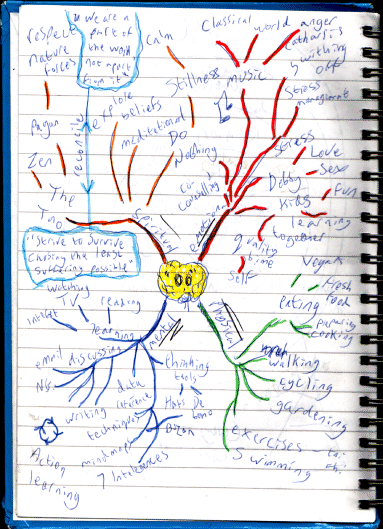In a recent post, I described how you don’t need to have an idea to get a book. Yes, it can help, but it’s not necessary; there are plenty of books floating around publishers that need an author to have them assigned to. Easily half of my first dozen books were assigned to me by the acquisitions editors I was working with. They’d suggest ideas for books to me. Some of the ideas I said “No” to: I don’t know enough about programming to write programming books, for example. Others just didn’t grab me or didn’t grab me enough with respect to some of the other projects available to me at the time.
But let’s suppose you like an idea that’s been lofted by the ack ed and want to pursue it. They ask you for a proposal, you say “Yes,” they hang up, and you suddenly realize that you don’t really know the product or the software or whatever very well. Are you doomed? No, probably not. And unless you’ve gotten yourself into completely deep water far out of sight of land, chances are that you’ll be okay.
What you’re going to be doing is writing to learn, as William Zinsser described it in his book of the same name. (I recommend that you buy a copy of this and read it, btw. Zinsser’s books are very approachable and really quite entertaining.) You won’t know a great deal about the topic when you start, but you’ll learn an awful lot as you write the book.
My technique for writing on a topic that I don’t know much about is to take it apart and figure out what skill sets I need to master it. Once I’ve gotten the skill sets identified for the topic, I match my skill sets with the skill sets for the topic and do my best to “surround” it. I then start making connections to the remaining skills I need. In the case of software, I frequently will find that I have most of the skills necessary to use the software, but need some conceptual knowledge and a chance to play with the software to get an idea of what I’m doing. (Picking up software quickly has been an essential ability for me.)
Here’s another place where networking is going to help you: it’s a good idea to cultivate friends who know things you don’t so when you have a question or need someone to give you a quick rundown, they’re able to help. And never discount the wealth of resources on the Internet: look for training materials, exercises, documents, and FAQs. Many colleges post their course materials online. Googling for the topic plus “training” or “classes” can produce a surprising number of relevant hits.
You may not realize it, but you’re already writing to learn. If you write technical manuals or magazine articles, chances are that you’ve written about something you didn’t know everything about when you began. You might have known the previous version of whatever or the topic your article was about, but your research and experimentation filled in the holes in your knowledge. That’s writing to learn, too!
As I’m building the outline for something I don’t know very well, I rely on the structure presented in other books, in training materials, and anything else I can find to get an idea of the structure I want for the book. Interestingly, I don’t think I’ve ever run into something that has the same outline and flow that I’d like to use for a topic.
Writing to learn may sound risky. It’s certainly more work than writing about something you’ve already mastered. But it lets you write a book and stretch yourself intellectually while doing so. There isn’t nearly as much risk as you might think, either. You’ll have an early measure of your ability to do this for a given topic: how well you do on your proposal. When you’ve created the detailed outline, you’ll have a feeling for what you can and can’t do. You can then make plans to fill in the holes in the outline and your knowledge.
On the other hand, if the topic’s too far afield and you can’t gain enough knowledge to feel comfortable, the proposal simply won’t happen. The proposal’s kind of a safety release in that way: if you can’t figure out enough of the material to create a good proposal, then you couldn’t possibly create a good book. In that case, apologize to your ack ed and say that you just don’t have enough knowledge on the topic to do well. It’s possible that your ack ed may nevertheless feel that the topic is something you can master (and they can give you some pointers on what you need to learn specifically) or that you might do well with a co-author who’s got product knowledge but lacks your writing skills… in which case, you’ll learn a lot about the product from working with an expert.
Writing to learn works. It takes some extra effort, but if you think about it, chances are you’ve already been doing it for a lot of other writing assignments.


